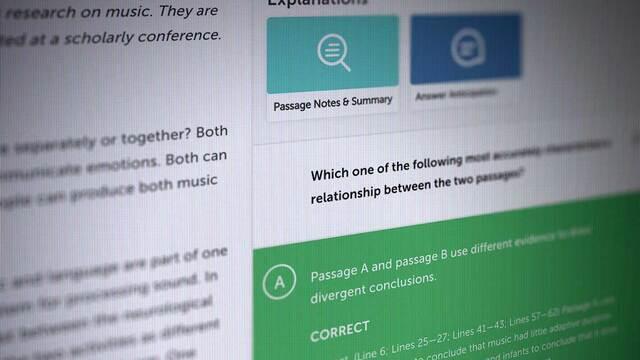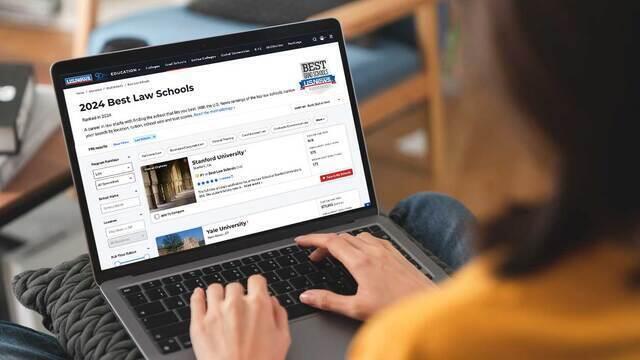For those taking the next LSAT — the test day nearing shockingly quickly — you should be wrapping up you study plan at this point. This crunch time probably consists of taking the last practice exam or two, blind reviewing them, and reviewing the last bits of difficult testing strategy, while making sure you’re feeling fresh and confident before test day.
To that last point, these final days are not for overexertion. You shouldn’t be overextending yourself. Trust in the progress that you’ve made over the last few months, as trying to cram in too much material in these last few days can do more harm than good. Whatever small progress you can make through overworking yourself can be more than wiped out if you’re feeling tired, unfocused, and burnt out on test day.
But if you’ve decided to take the LSAT at home, there’s one productive thing you can do while you ramp down. You can make sure your home computer setup is ready to take the LSAT. You’ve been working so hard to make sure you can handle whatever the LSAT throws at you. It’d be a shame if your computer couldn’t keep up with you. To that end, let’s talk about what you can do to make sure the LSAT’s testing interface will work well on your computer and what you can do if it (heaven forbid) doesn’t.
Making Sure the Testing Interface Works on Your Computer
If you choose to take the LSAT at home, a proctor from a service called Prometric will observe you as you take the exam. Don't worry—they're not coming to your home or anything. They'll observe you remotely, through your webcam and microphone, to check whether you're using prohibited materials or receiving assistance as you take the exam. They'll also be able to view your screen as you take the exam and take over your cursor and keypad if they believe anything is amiss.
Since you'll be connected to your proctor virtually, technical difficulties may affect your test-day experience. In fact, on the first few remotely-proctored LSATs, system outages and other technical issues have prevented some students from completing their tests and led to others being unacceptably distracted by technical problems that LSAC.
As remotely proctored exams have become the norm for LSAT, these technical issues have become increasingly uncommon. The vast majority of test-takers can complete their exam without incident. Still, technical issues inevitably affect some test-takers every LSAT administration.
What can you do to ensure these Prometric-related issues don't affect your test-day experience?
The first step is being prepared. Make sure your device will work with Prometric by running a tech check on Prometric’s “System Readiness Check” well before test day. (You should also be sure your laptop or desktop meets the following requirements:
- A quiet, well-lit, private, enclosed room in which to take the test with a table or desk and a chair. Please note that transparent glass walls are not considered part of a private room and are prohibited.
- A laptop or desktop computer with one of the following active and licensed operating systems: Windows 8.1, MacOS 10.13 to 12.6.5, or MacOS Ventura 13.3.1 and above.
- A screen resolution of 1024x768.
- A webcam with a resolution of 640x480p and a microphone.
- A strong and stable Internet connection with a download speed of at least 1.0 mbsp.
- The latest version of Google Chrome web browser.
- Administrative rights to the computer on which you’ll take the test. (This is so you can download the required proctoring software.)
In this webinar, we explain how a simple conversation with your remote proctor can ensure a smooth at-home test-taking experience.
If you cannot provide a device for yourself that meets these requirements, you will need to sign up to take a later LSAT at a Prometric Testing Center. The deadline to sign up to take the test at a Prometric Testing Center is thirty days before an LSAT administration. You can schedule your test day and time using Prometric's ProScheduler tool.
Experiencing Technical Issues on Test Day
If, in spite of your best efforts, you experience technical issues on the LSAT, submit a test-day complaint on your LSAC account to notify LSAC of the problem so that they may determine how to remedy it. Note that the complaint process is only for issues you believe LSAC must investigate before issuing your score. If you were unhappy with your test but don't want your score held for an investigation, select "feedback" rather than "complaint" when
submitting your concern.
When you submit your complaint, LSAC will ask whether you would prefer to:
- Keep your LSAT score
- Cancel your LSAT score and register for one of the next three LSATs (for free), or
- Retake the test on a makeup date during the current LSAT administration
We recommend Option #3 to most test-takers. The makeup date is usually about a week after the initial LSAT dates, giving you more time to study for the exam but not so much time that you risk significant burnout. Moreover, this option will only count as one exam toward the test-taking limits. If you cancel your score and register for one of the next three LSATs, this will count as two exams, as both the canceled score and the second exam count toward the test-taking limit. Finally, LSAC will release scores from the makeup date on the same day as the rest of the scores from that LSAT administration, so the makeup test won't delay your application.
If LSAC determines that the test-day complaint was serious enough to adversely affect your performance, LSAC will grant your above preference. Here are a few issues that LSAC has deemed serious enough to adversely affect a test-taker's performance:
- A test-taker being unable to complete an exam
- A proctor taking over a test-taker's cursor and keyboard without first pausing the test
- A proctor enforcing a nonexistent rule
If LSAC does not determine that the issue was serious enough to affect your experience, it will still give you the option to keep or cancel your score. If you cancel your score, you will be responsible for paying for your registration fees for any future LSAT you sign up for, and you will not be able to retest during the makeup date. Moreover, your canceled score will count toward your test-taking limits.
And no matter what happens on test day, LSAC won't issue you a higher score than you earned based on correct answers on the test—even if you're 100% sure you answered every question perfectly, right up until your internet went down or your computer crashed. The best you can hope for in such circumstances is a chance to try again.







